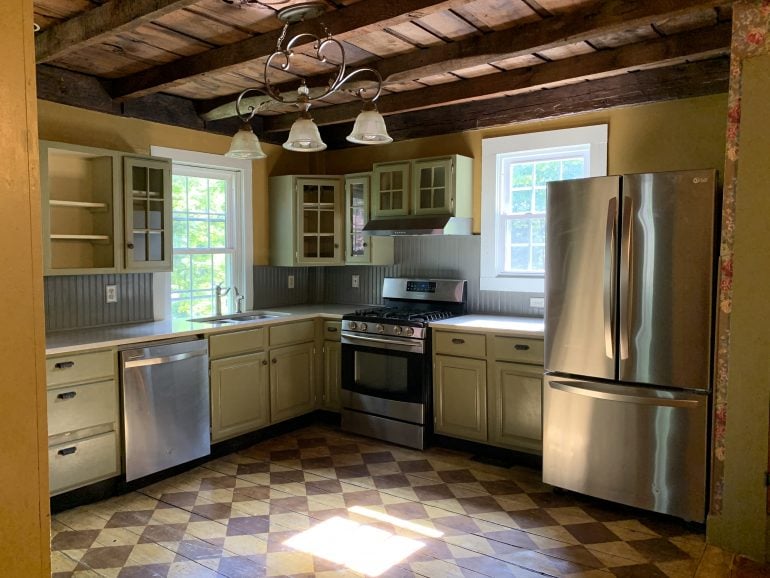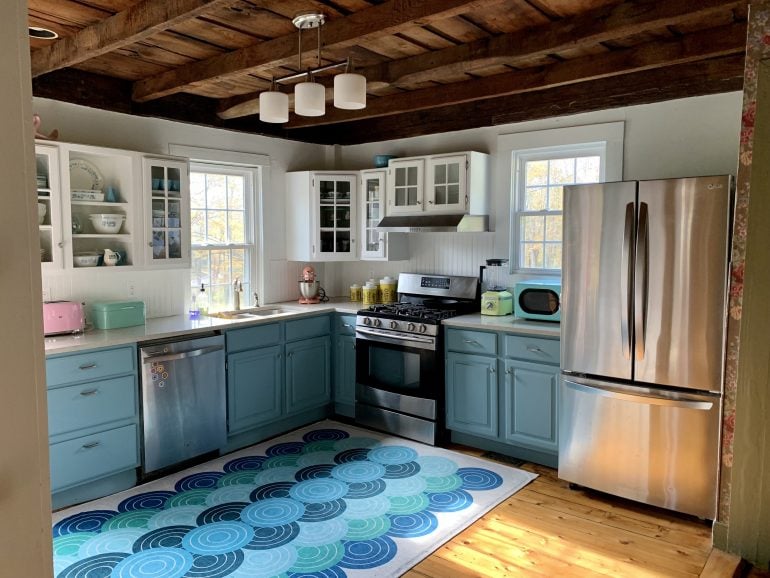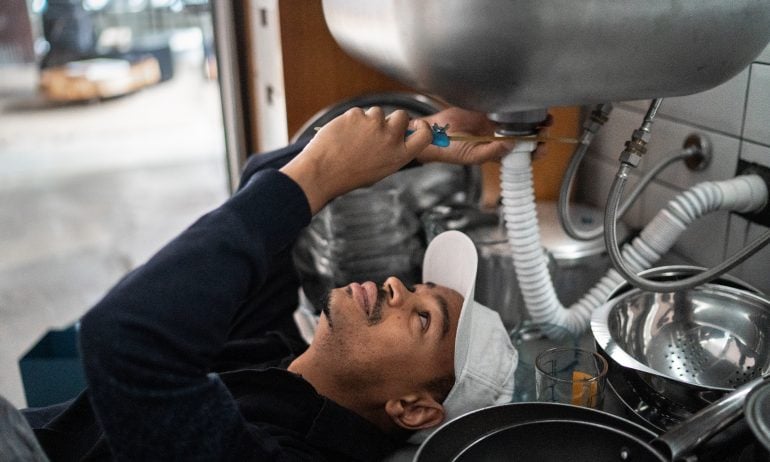In September 2020, I closed on my home, a pre-Revolution, Cape Cod-style cottage. The house had certainly stood the test of time, but it needed considerable work. Floorboards moved when I walked. Water backed up into the basement. Whether the furnace worked was up for debate. I was now the proud owner of so, so many problems.
Maybe I was somewhat overconfident about my appetite for #oldhouselife, but I'd gone into my home search looking for a fixer-upper. I was about as ready as one can be for a home that would be relatively cheap to buy but expensive to own.
Buyers of newer homes can face unexpected costs too, and when you've just closed, finding money to pay for them can be tough. A home equity loan, home equity line of credit or cash-out refinance are standard suggestions when it comes to funding home improvements. But when you've just bought a house, you rarely have enough home equity to borrow against. Planning ahead for how you'll pay for expected (and unexpected) improvements can reduce stress and save you money.
Why you might be making repairs sooner than you think
Sure, my nearly 300-year-old home is an outlier, but it’s true that younger buyers — who are also more likely to be first-time home buyers — tend to buy older homes, according to 2020 data from the National Association of Realtors. Buyers ages 22 to 30 are also the most likely to compromise on their home’s condition and spend the least on their actual purchase, per the NAR.
This also continues to be a tough market for buyers, period. Forget negotiating repairs with the seller — in many parts of the country, buyers have been making offers that waive the inspection contingency altogether. That leaves buyers less prepared for systems that might need maintenance or are near the end of their expected lifetimes, not to mention smaller problems that can crop up (sometimes literally small, like the mice that woke me up when they got into my house's ductwork).
It's smart to have a strategy for paying for repairs and emergencies, in addition to all the fun stuff. Feathering your new nest is delightful, but projects that are significantly less sexy than a kitchen update have a way of getting to the top of your to-do list. Data from the Harvard Joint Center for Housing Studies shows that recent home buyers spend roughly 35% more on improvements than people who've owned their homes for three years or more.
Of course, some of that's probably giving the walls a fresh coat of paint or upgrading an appliance or two — but I'd be willing to wager that a good chunk of that change goes to dealing with new house headaches. Here's how I handled mine.

The author's kitchen at closing, complete with nonfunctional oven and dubious wiring. (Photo courtesy of Kate Wood)
3 ways I paid for repairs and upgrades
1. Stashed cash
I know. When you're gearing up to buy a home, you're already socking away every last cent just to cover your down payment and closing costs. But you might want to set aside a percentage of your savings to build up an emergency repair fund — because after closing day, any day might be a rainy one.
The house I ended up buying was at the lower end of my budget (again, cheap to buy, expensive to own). That meant I was able to divert some of what I had anticipated using for my down payment toward renovations and repairs. If I could go back and do it again, I would set aside even more (or maybe buy a house built within the last century).
One reason to have cash on hand: Not all tradespeople take credit, especially if they're a one-person operation. Having a cushion for out-of-pocket expenses ensures you're able to pay for (hopefully smaller) repairs as they arise. In my case, I used cash to pay my electrician, plumber and HVAC technician. Did I sometimes have to ask the electrician to wait to cash my check? Yes, at least twice. But was I able to cover the cost of what turned out to be extensive rewiring? Also yes.
2. Zero-interest credit card
Despite having a storage unit full of accumulated apartment furnishings, I was missing many essentials when I moved into my house. My love seat and desktop-computer-as-TV setup looked sad in a full-size living room, and the washer/dryer hookups needed, well, a washer and dryer.
Like many home buyers, I'd heard and heeded the warning not to make big purchases or apply for credit during closing. In order to ensure I'd be approved for a home loan and get the best possible mortgage interest rate, I'd been working on building my credit score long before that. By the time I closed on my home, my credit score was stellar — so I put it to work.
A few days after I closed on my home, I applied for a card that offered cash-back benefits and a long 0% APR introductory period. That let me parcel out payments for appliances, furniture and endless trips to the home center and hardware store without having to pay interest on my purchases.
Why apply so fast, especially when shipping delays meant my new sectional wouldn't arrive for months? Because when the credit bureaus find out you've got a massive new structured debt — i.e., your mortgage — your credit score takes a major hit. Sure, your score should rebound once you've shown that you're making on-time payments, but it'll still likely be lower because now you're saddled with mega-debt. That's why I got the best card I could while the getting was good.

The author's kitchen, which now includes a working stove and updated electrical. (Photo courtesy of Kate Wood)
3. Personal loan
I had hoped to get one more year out of my home's clearly not-new roof. But when a brown stain appeared on my bedroom wall, I realized that timeline was optimistic. If I didn't want my home's moisture issues to go from a trickle to a flood, I needed a new roof right away.
That five-figure project cost more than my new credit card could handle, and I didn't have remotely enough cash on hand. (I'd already spent it, not just on small projects but also on a new furnace and repairing and refinishing all the floors.) Having owned my house for roughly six months at that point, I wasn't even remotely in a position to borrow against home equity or do a cash-out refinance.
I needed a home improvement loan, and with limited equity, a personal loan was my best option. Though personal loans have higher interest rates, approval is much faster than with any type of home equity loan or refinance, and you can potentially borrow enough to cover a home improvement project that's too big for your credit cards.
I shopped several lenders, but ended up financing my roof with a personal loan through my contractor. Larger service providers, like the builders who put on my roof, will often have a relationship with a lender. This allows the builder or contractor to offer financing, even though they aren't the ones actually making the loan.
In the end, I compromised a little on the rate — compared to the preapprovals I got online — for the convenience of going with my builder's lender. They offered me a generous repayment schedule, but I opted to pay down the loan as aggressively as I could so I wouldn't spend too much on interest. And besides, with my old house, I'm just trying to have each project paid for before the next one comes up.




